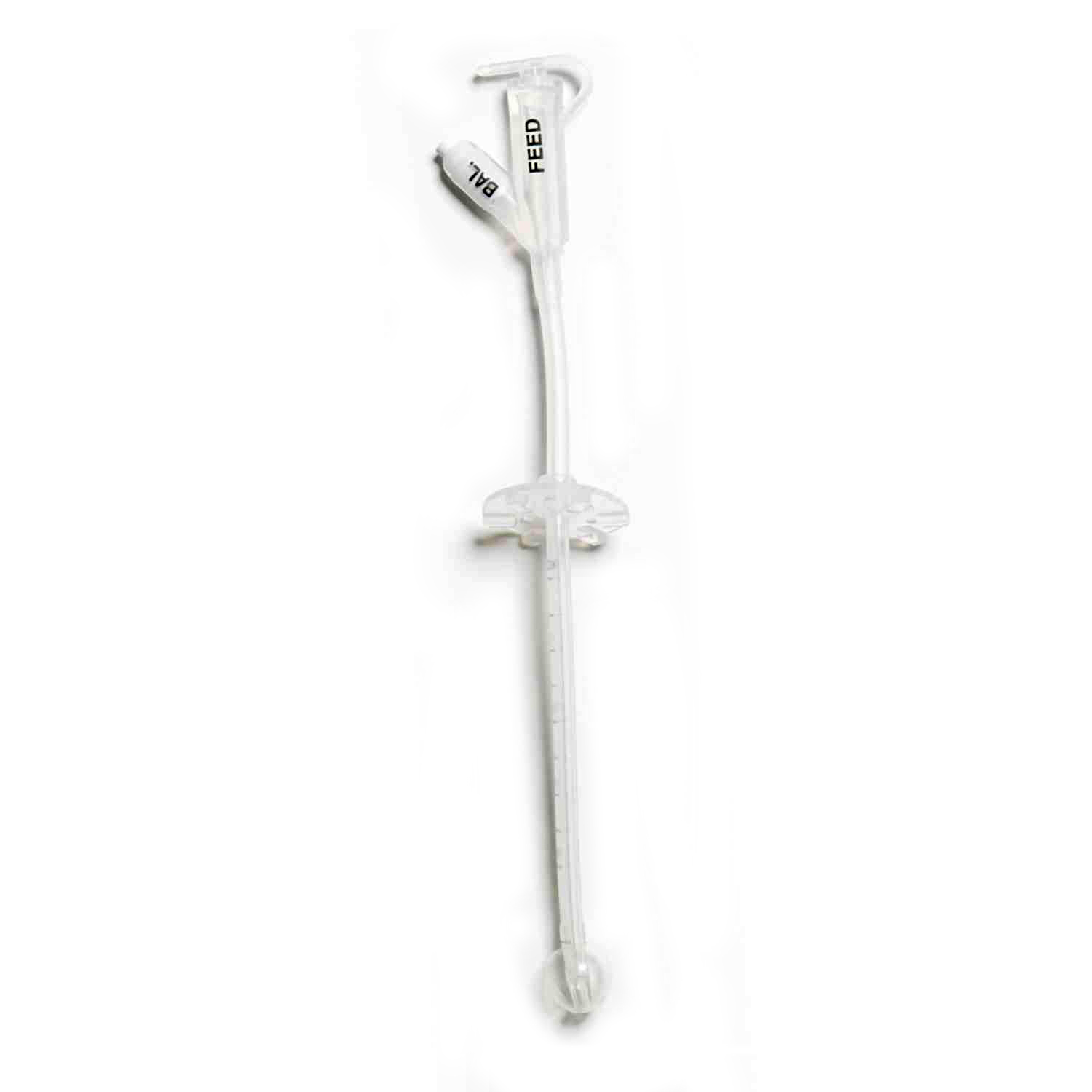MIC Bolus Gastrostomy Feeding Tube is used for patients on a bolus feeding regimen. It is made of medical-grade silicone for visibility and drapability, and it comes with an inflated silicone internal retention balloon. The Secur-Lok external retention ring is meant to let air circulate the stoma site and relieve tube pressure from both sides of the stoma wall.
Features
- Dual exit points.
- Radiopaque stripe.
- Available in seven French sizes.
- Medical-grade silicone structure.
- FDA-approved and CE-marked.
- Secur-Lok is an exterior retaining ring.
- An inflatable silicone internal retention balloon.
- Recessed distal tip with appropriate fill volume.
- Provides graduated centimeter markers for tube position verification.
Indications for Use
AVANOS MIC Gastrostomy / Bolus Feeding Tube is indicated for long-term feeding in patients who cannot eat orally, are at low aspiration risk, need gastric decompression, and/or require direct medication delivery into the stomach.
Contraindications
Include, but are not limited to:
- Ascites
- Colonic interposition
- Portal hypertension
- Peritonitis
- Morbid obesity
Possible Complications
- Infection
- Skin breakdown
- Pressure necrosis
- Intraperitoneal leakage
- Hypergranulation tissue
- Stomach or duodenal ulcers
Important Notes
- Do not use if the package is damaged or the sterile barrier is compromised.
- The tube is for enteral nutrition/medication only.
Placement Options
- Surgical
- Percutaneous (fluoroscopic or endoscopic guidance)
- Replacement via established stoma tract
Key Cautions & Warnings
- Gastropexy must be performed before initial placement.
- Never use the balloon as a gastropexy device (risk of rupture).
- In infants/children: place the insertion site high on the greater curvature to avoid pyloric occlusion when the balloon is inflated.
Balloon Maintenance (Check Weekly)
- Use Luer slip syringe → fully withdraw water → compare to prescribed volume.
- If low: refill with withdrawn water + add amount needed.
- Wait 10–20 min and recheck. If volume lost again → balloon leaking → replace tube.
- If the balloon ruptures/tube dislodges: tape in place and contact the physician immediately.
- Document date, time, volumes.
- ONLY use sterile/distilled water (never saline or air).
- Exact prescribed volume:
- Over-inflation → lumen blockage or shorter balloon life
- Under-inflation → poor fixation
Balloon Longevity
Silicone balloons typically last 1–8 months (varies with medications, water volume, gastric pH, and care).
MRI Safety Information
The MIC* Gastrostomy Feeding Tubes are MR Safe.
Warning
Single-use device. DO NOT reuse, reprocess, or resterilize. Doing so may:
- Alter biocompatibility
- Compromise structural integrity
- Cause device failure
- Risk contamination/infection → patient injury, illness, or death
| Model No: |
Diameter (Fr) |
Silicone Internal Retention Balloon Volume (ml) |
Tube Tip Type |
| 0110-12LV |
12 |
3-5 |
Tapered Distal Tip |
| 0110-14LV |
14 |
3-5 |
Recessed Distal Tip |
| 0110-16LV |
16 |
3-5 |
Recessed Distal Tip |
| 0110-18 |
18 |
7-10 |
Recessed Distal Tip |
| 0110-20 |
20 |
7-10 |
Recessed Distal Tip |
| 0110-22 |
22 |
7-10 |
Recessed Distal Tip |
| 0110-24 |
24 |
7-10 |
Recessed Distal Tip |
